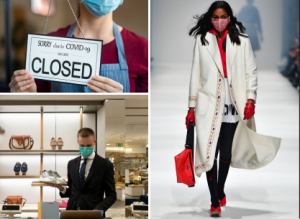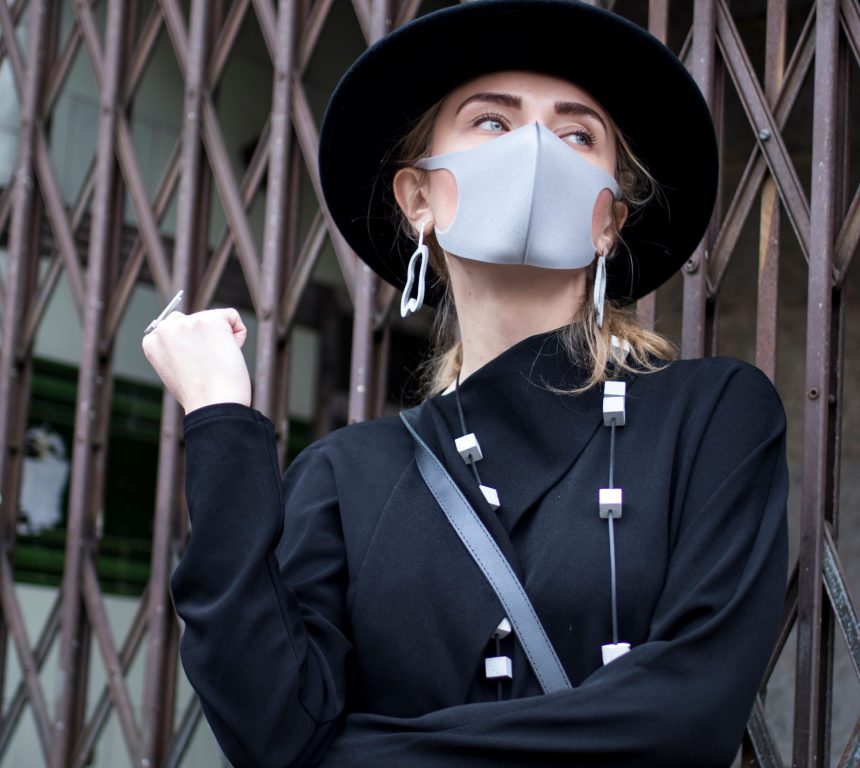By: Rana Nabati

Rana Nabati holds an engineering degree from the University of California, Berkeley and started off her tech career in San Francisco. However, her true passion was in the world of fashion, which led her to move to New York City. She studied fashion business management at the Fashion Institute of Technology followed by an MBA, specializing in Luxury Marketing from New York University, Stern School of Business. In the past 10 years, Rana has worked with global fashion and luxury brands such as Louis Vuitton and Dolce & Gabbana, as well as museums and art institutes, including the world-renowned Metropolitan Museum of Art.
The COVID-19 global pandemic has severely affected all industries around the world and some industries such as travel and tourism, hospitality, and fashion have been hit the hardest. As most countries have gone through long periods of strict lockdowns, the fashion industry’s supply chain has been severely compromised by factory shutdowns and delayed deliveries. Additionally, sales took a drastic hit due to store closures for the better part of 2020.
On the consumer side, as we struggle with rising death tolls, lockdowns, unemployment, and collapsing economies all over the world, fashion has consequently become the least of our concerns. According to McKinsey & Company’s latest report, “The State of Fashion 2021,” the global fashion industry could lose a staggering 440 billion USD— approximately 20 percent of revenues— this year. Most regions around the world are still struggling with the pandemic, which means that the industry decline will continue well into 2021. It is estimated that 20 to 30 percent of companies in the fashion sector are expected to go bankrupt or be acquired by larger companies.
Fashion executives are faced with devastating circumstances. Navigating through these unchartered territories is only possible by finding creative and effective solutions through channel strategy, digital transformation, merchandise strategy, and customer relationship management.
The COVID-19 crisis has had crippling effects on the fashion industry but as the saying goes, “every cloud has a silver lining.”
Since the beginning of the pandemic, online sales have had an unprecedented growth, rising from 16 percent of total sales in January 2020 to 29 percent in August. In just eight months, online shopping has had the equivalent of six years growth. To capitalize on this trend, industry leaders have shifted their channel strategy focus to scale up their online capabilities, some companies have already reported double or even triple digit growth in e-commerce. The importance of investing in a comprehensive digital transformation has never been more apparent for the retail industry and companies have been forced to act quickly and efficiently due to the crisis.
It is expected that e-commerce sales will decline after mandatory lockdowns are lifted and life goes back to normal, but many consumers who are now highly accustomed to online shopping and have discovered its convenience, will continue to shop online much more frequently.
than they did before the pandemic. The fashion industry has infamously been lagging behind other sectors in terms of its agility and responsiveness to market changes as well as digital adaptation. This pandemic has made it clear that businesses need to face these problems head on and as quickly as possible.
These advancements will not only help fashion companies to survive the COVID-19 crisis but will also allow them to thrive and operate more intelligently and efficiently in the long run.
Anna Wintour, editor of Vogue and artistic director of Condé Nast, said in an interview with New York Times, “for an industry that is meant to be about change, sometimes we take a long time to do just that, because it’s so big and there are so many moving parts. But now we were really forced into a moment when we had to reset and rethink.” Since the beginning of the crisis back in late 2019, we have all been forced to modify our behaviors and adapt to a “new normal” and this new normal for the majority of us doesn’t include wearing the latest fashion trends.
We have been confined in our homes, detached from the outside world with minimal social interactions and our wardrobe choices have been reduced to practical loungewear and comfortable slippers. While total clothing sales fell 79 percent in the United States in the month of April 2020, sweatpants and sweatshirt sales increased 80 percent. To reflect this trend retailers that had agile and flexible supply chain and logistics capabilities acted quickly and shifted their merchandise strategy to expand their loungewear and athleisure collections.
Many formal and evening wear designers are also trying to pivot from party dresses to house dresses, on the premise that consumers are fed up with wearing sweatpants day in and day out and at some point, they would like to dress up even if they are sheltering in place and working from home.
Another consideration for many designers and brands has been to create season less collections with clothing and accessories that are more versatile and practical. The gradual transition to a more casual and comfortable style that has been going on for some time across the industry for all categories including apparel, shoes and accessories, is now accelerating with great speed due to the pandemic and retailers must revise their product lines to comply with consumer needs. This pandemic has threatened the very existence of many fashion businesses around the globe. As survival has become top priority, retailers have resorted to drastic measures by offering a wide range of promotions and massive price cuts of up to 90 percent to boost short-term sales.
Despite offering unusually high discounts to incentivize customers to make purchases, many retailers are still struggling with low sales volume. Under normal circumstances, markdowns and promotions translate into sales and quick cash, but in today’s climate, uncertainty has changed consumer behavior. In “A Theory of Human Motivation,” by the renowned psychologist, Abraham Maslow, a theory of psychological health based on satisfying the human needs in order of importance ranging from basic to self-fulfillment needs is introduced. He developed the famous Maslow’s hierarchy of needs, which is widely used in behavioral studies in the retail industry.
Consumer behavior studies show that every purchase decision is motivated by satisfying an unmet need, which are categorized in three levels based on Maslow’s theory: Basic Needs, Psychological Needs, and Self-fulfillment Needs. The COVID-19 crisis has shifted our priorities back to the basics. However, aside from the minimal clothing that we need to keep warm and stay protected, fashion is not considered a basic human need. In times of crisis such as the COVID-19 pandemic, offering deals and discounts alone is not enough for fashion companies to stay relevant.
Retailers need to modify their marketing efforts to reflect the crisis and connect with their customer base on a deeper level by tapping into the consumers’ psychological and self-fulfillment needs through brand messaging, community outreach, and exceptional customer service .




